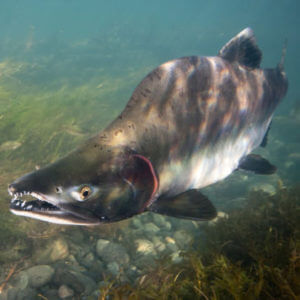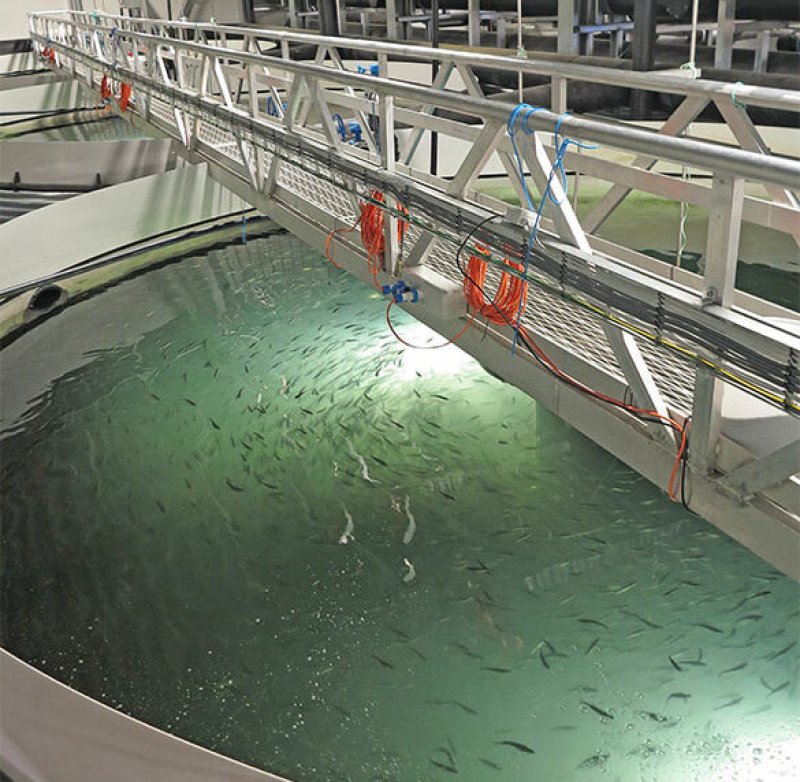One, the “pink salmon” (one of the five species of Pacific salmon) is a darling of environmentalists and recreational anglers because it’s considered “wild” and perceived as more natural than farmed Atlantic salmon, even though it can also be invasive and its “wild” origins are more the stuff of myth.
The other is the AquaBounty AquAdvantage Salmon, demonized by some of the more extremist environmental groups because it’s not “wild,” might escape (actually, it can’t because it’s raised in inland farms), and considered potentially invasive (although multiple environmental studies conclude it is not).
In the summer of 2017, anglers in Ireland and Scotland reported they were reeling in increasing numbers of foreign salmon that had apparently displaced local fish. Their consternation prompted the government to seek out additional sightings or landings of these alien fish varieties.
Was this unwanted invader the new salmon? No, it was actually the pink salmon, heralded by anti-GMO and environmental organizations as the more “natural,” “wild” salmon that—in their opinion—should be on every salmon-lover’s plate.
The incidents highlight a strange twist in the plot involving efforts by anti-GMO environmental groups, like Food and Water Watch, to halt commercial production of the world’s first genetically engineered salmon — a fish that grows to full size about twice as fast as traditionally farmed Atlantic salmon.
There is a certain irony in the fact that Food and Water Watch has advocated, in the recent past, for some of the things this new GMO fish is designed to do. Namely, it would be grown in land-based facilities designed to prevent it from escaping into the wild. And even if it did escape, these fish are bred to be sterile, offering another safeguard against them creating problems for native fish. In other words, the AquAdvantage fish would never be in position to plague those northern European salmon-fishing spots now dealing with pink salmon — considered an invasive species in the U.K., where the Atlantic salmon is native.
Food and Water Watch is a nonprofit that was spun off from Ralph Nader’s Public Citizen in 2005 to focus on food issues and biotechnology. According to a profile at the Genetic Literacy Project:
Most visible campaigns have revolved around organic agriculture, bottled water, genetically engineered bovine hormones (i.e. rBST), fracking, GMO labelling, Trans-Pacific Partnership, glyphosate, drinking water standards, ethanol and food irradiation.
The new fish was created by adding a growth hormone gene from the chinook salmon and a promoter sequence from the ocean pout. It’s taken almost 20 years of rigorous — most scientists say excessive—testing to get this “sustainable fish” to the edge of being introduced into the marketplace. The key hurdle—a determination by the FDA that the AquAdvantage is safe to eat—was cleared in 2015. Now, the company is building a land-based fish farm for the salmon in Prince Edward Island, Canada.
After the provincial government approved the fish farms, objections were raised by environmental groups (this included an unsuccessful lawsuit) against the Canadian government. Initially, government officials voiced their continued support for the project, saying it needed no more assessments. But then officials started wavering, stating in a letter that the project would have to go through an environmental risk assessment.
Along this journey, opposition from various groups has mounted. Food and Water Watch has been particularly aggressive, submitting comments to the FDA to block the agency’s approval of AquaBounty. When the FDA issued its approval, the group and others joined in a lawsuit against the FDA. In a 2016 issue brief, group laid out its concerns:
Beyond GE salmon’s uninspiring growth rates, the fish demonstrates serious risks to consumer health, animal welfare, fishing economies and the environment. That’s all on top of potentially diminishing the nutrition and taste of salmon, one of the most popular and important fish in the American diet. Unfortunately, the FDA’s flimsy regulatory approach has failed to examine both the false promises and clear risks of AquaBounty’s GE salmon, leaving consumers unprotected.
In addition, Food and Water Watch issued concerns not only about potential harm from genetic modification, but also the danger of escaping fish from marine-based ocean pens. In a June 4, 2014, complaint to the U.S. Securities and Exchange Commission, FWW wrote:
Once a fish escapes, it can never be retrieved. The environmental damage
associated with a release could affect the regulatory status, consumer acceptance, and market success of the AquAdvantage Salmon, and the loss could dramatically reduce revenue. Such an escape event is not purely hypothetical; the company already reported an
accident involving “lost” salmon when a severe storm caused a mechanical failure.
Ideological jiu jitsu
Dedicated anti-GMO opposition groups like Food and Water have had to do some policy twisting to rationalize their objections to the AquaBounty salmon. For years they have advocated land-based fish farms instead of ocean-based fish pens. They have warned about the dangers of pollution and inadvertent release of farmed fish that could threaten native salmon populations. At the same time, advocacy groups have opposed the import of (presumably farmed) salmon, for largely similar concerns over safety of the import and the environmental damage from overseas ocean pens and fish farms. Food and Water Watch even helped create a group — Recirculating Farms Coalition — in an attempt to convince people that land-based tanks were preferable to ocean farms. This coalition has argued that aquaculture (in addition to other forms of farming) was safer, and more environmentally sustainable if it took place within land-based tanks, and has argued against importing fish (preferring local sources).
However, with the introduction of AquaBounty’s intentions of raising its genetically engineered salmon in land-based tanks, a number of these groups have opposed land-based aquaculture (at least of AquAdvantage salmon).
For non-GMO salmon, a number of environmentalist organizations still favor land-based operations, for the same reasons FWW has opposed AquaBounty’s efforts; the fear of escaping fish. According to the Canadian organization Living Oceans:
The employment and local economic activity generated by the salmon farms could have been realized without this conflict, if the farms had been established on land, like the nearby ‘Namgis closed containment operation called Kuterra. Kuterra salmon commands a premium in the market and has the highest sustainability rating of any farmed salmon. Begun as a pilot project, the operation has now proven out the technology for raising salmon to market size in containment tanks that eliminate environmental impacts while minimizing the need for drugs or chemicals in the production process.
Our presentation pointed to developments around the globe that are encouraging the development of land-based closed containment farms as a means of both protecting the environment and lowering production costs and risks

This placed the wild pink Alaskan salmon as the only viable source acceptable to Food and Water Watch and others. And this fish has been under pressure from commercial and recreational anglers. The fish also isn’t very wild. It’s suspected that the Irish and Scottish invaders migrated from original fish stocking pens in Russia. While no such farming was ever permitted in the UK or Ireland, this is a migratory fish that has established populations in northern Russia and Norway. This fish, which is native to rivers and streams in Alaska, British Columbia and the US Pacific Northwest, does not start out all that naturally. It is raised in stocked waters, is released by farmers, and then allowed to continue its life cycle.
In other words, based on the facts and the sustainable goals of many green groups, AquaBounty’s GMO salmon should have been hailed as a dream come true. But science came head to head with ideology, and at least in the case of Food and Water Watch, activist sentiments prevailed.
For now, AquaBounty plans to continue its efforts to create a land-based fish farm on Prince Edward Island, on a site that once was a hatchery. No doubt FWW and other opposition groups will continue. And in Ireland and Scotland, as elsewhere, the fishing continues.
A version of this article originally appeared on the GLP on August 10, 2017.
Andrew Porterfield is a writer and editor, and has worked with numerous academic institutions, companies and non-profits in the life sciences. BIO. Follow him on Twitter @AMPorterfield































